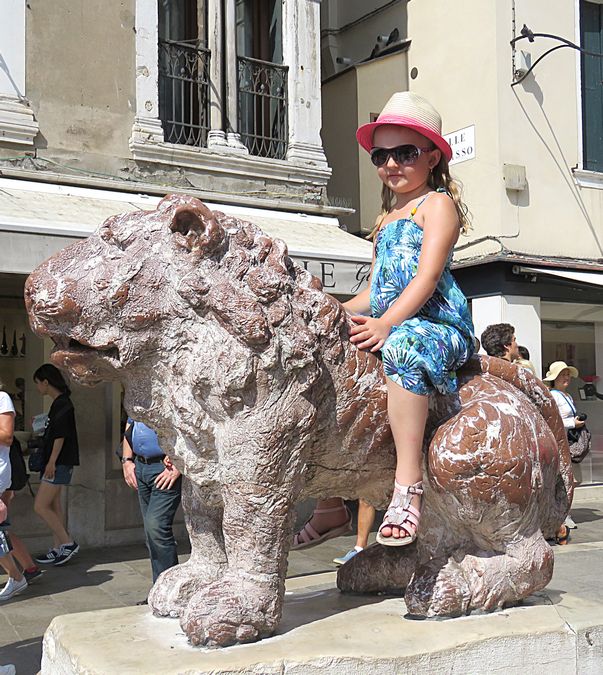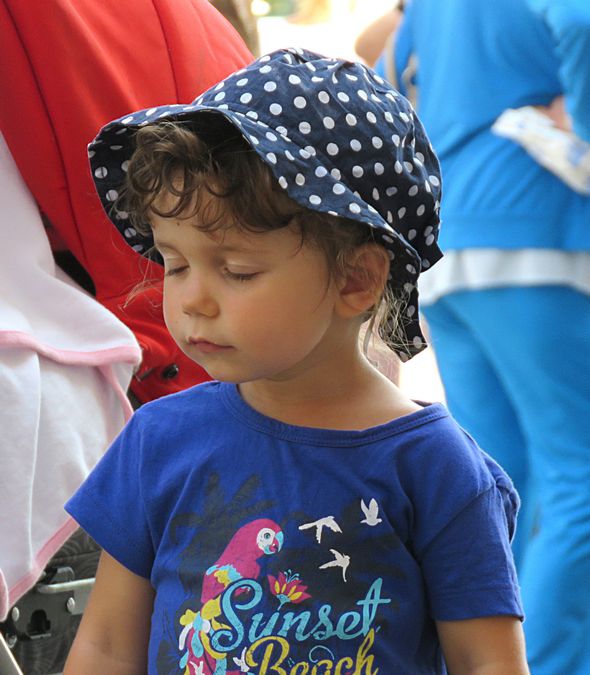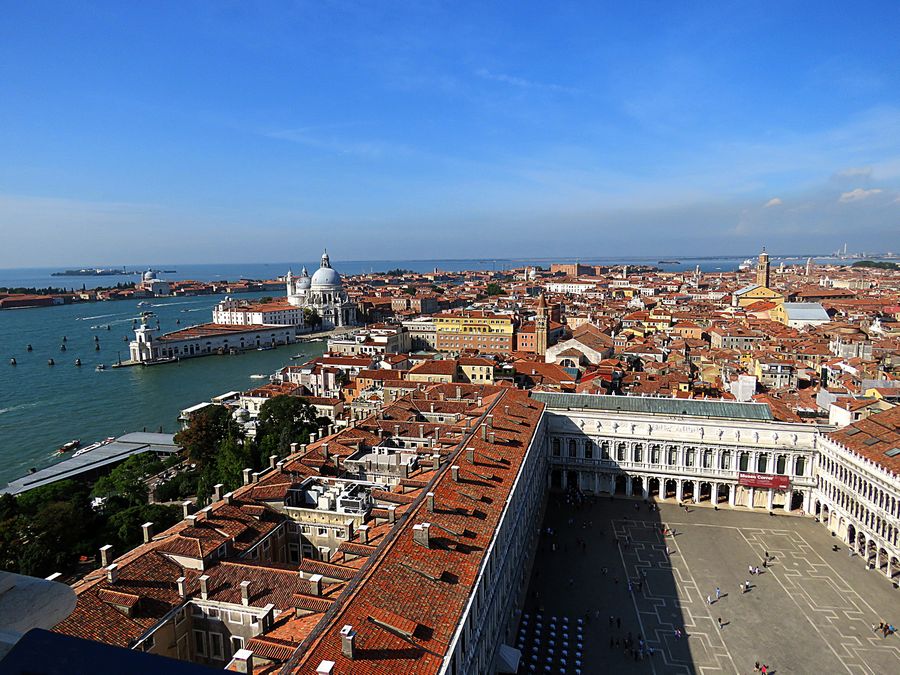Venice and the Dolomites
September 1 - September 14, 2015
Jeff and I took a guided hiking tour with Mountain Travel Sobek,
hiking 7 straight days in the Dolomite Mountains in
Italy's northern Alps. We spent 3 nights in Venice before
the guided hiking trip started.
Page One - Venice
Venice is a city in northeastern Italy situated on a group of 118 small islands separated by
canals and linked by bridges.
It is located in the marshy Venetian Lagoon that stretches
along the shoreline, between the mouths of the Po and Piave Rivers. The city is known for
the beauty of its setting, its architecture, and its artwork. The entire city and the lagoon is a
World Heritage Site.
The beautiful faded palazzos, whose facades are the face of the city,
are an accomplishment of medieval engineering. Built on wooden stilts and without fixed
masonry, the buildings were designed to move and adapt to the uneven settling of the ground
beneath.
The Republic of Venice was a major maritime power during the Middle
Ages and the Renaissance. It was a staging area for the Crusades, and an important
center of commerce and art in the 13th century up to the end
of the 17th. It is the birthplace of Antonio Vivaldi.

We were surprised and pleased to get this stunning
view of Mont Blanc, the tallest mountain in western
Europe at 15,778 ft., from our airplane as we were
flying to Venice.


We took a Alilaguna public water transport from the Venice Airport to our hotel
in Venice, the Londra Palace Hotel. This photo was taken from
the water bus just before it arrived at our San Zaccaria stop.
The area in front of the hotel is called the Riva, a waterfront promenade. The
equestrian monument depicts Victor Emmanuel II who helped lead Italy to
unification and was the country's first king in 1861.

San Giorgio Maggiore Island and Church, as seen from the area
in front of our hotel and across the water from St. Mark's Square.

Church of San Zaccaria, not far from our hotel
In the 9th century, when Venice was a collection of wooden houses, and
before famous St. Mark's Basilica existed, a stone church and convent
was here. This structure is largely from the 15th century.

The Bridge of Sighs. It connects the Doge's Palace (left) with the Doge's
prison. The bridge allowed swift justice. Convicted criminals were escorted
directly from the Palace's courtroom to the prison (right). There were no
windows in the prison cells. According to legend, prisoners took one last
look
the outside world before entering the dark and dungy prison. This view
is from a bridge over the canal seen in this photo. A gondolier is taking
some tourists on an expensive ride. Hordes of tourists were standing on the
bridge to take photos of this scene, as they almost always are.

The Campanile, a bell tower in Piazza San Marco (St. Mark's Square).
The original tower was an observation tower until 1902 when it fell into
the Square. It was rebuilt 10 years later. You can ride a lift to the top
for beautiful views of Venice (see later photos).

St. Mark's Square with St. Mark's Basilica and the Campanile.
Around the square are former government offices that managed the
treasury of St. Mark's when the church and state were one. The offices
managed the Venetian empire's network of trading outposts that reached
Turkey. Now it is filled with cafes and competing orchestras. Daytime features
tourists and others gathering, many playing with the numerous pigeons.
Evenings, small orchestras play outside at the cafes. At high tides, the square
can be full of water.

Although feeding of pigeons was outlawed in 2008, we saw many tourists
doing so, partly in order to capture pictures of themselves with the pigeons
on them.

This man is a musician for one of the little orchestras playing in
St. Mark's Square.

Typically Renaissance cities had a formal entry and a clock tower.
Venice's clock tower leads from St. Mark's Square, the Basilica,
and Doge's Palace into the rest of the city.

Top of St. Mark's Basilica. The facade is a mix of Roman style
and Byzantine mosaics with Gothic pinnacles and Muslim shaped
onion domes. Merchants stole the body of St. Mark from Muslim
occupied Alexandria, Egypt and presented it
to the doge, the ruler
of the Venice empire. In 828, the first church of St. Mark's was built
to contain his body. The original church was burned in 976. Today's
structure dates back to 1063.
The basilica itself contains lots of booty that
was looted from the Middle East and other parts of the Venetian empire.

Bronze horse statues on the outside of St. Mark's Basilica. These are bronze copies of
the originals, which are now inside the Church to protect them from the threat of
oxidation from pollution.

There are two lion statues to the left of St. Mark's Basilica as you face it. Both tourists and
Venetians delight in taking photos of their kids and/or themselves on these statues.

View of St. Mark's Square from the balcony of St. Mark's
Basilica. You can takes pictures from here but not inside
the Basilica, though many people were ignoring that prohibition.

View of top of the Clock Tower entrance to
Venice from the balcony at St. Mark's Basilica.
Two bronze Moors stand on top of the Tower. Every
hour they swing their clappers. A winged lion is below
them, the symbol of St. Mark and the City. He opens
a book that reads in English translation: "Peace to
you, Mark." The winged lion symbol is visible in
many locations throughout the city and on the T shirts
Jeff and I bought for ourselves while there.

Doge's Palace, the palace of former rulers. From about 1150 to 1650,
it served as the home of the Venetian ruler known as the doge, or duke.
During that time, it was the most powerful space in Europe.

Above an entrance to the Doge's Palace, which is connected to St. Mark's
Basilica.

A baby in the Piazzetta, the little square between the Doge's Palace,
the library on the other side, and the waterfront of the lagoon.

Another child in the Piazzetta

The courtyard of the Doge's Palace with the Grand Staircase
in the back on the right.

Statues of Neptune and Mars at the top of the Grand Staircase
with the ever present winged lion above. The Doge and his aides
used to wait for foreign dignitaries to ascend these stairs. The Doge
never deigned to descend to greet the visitors.

Mouth of Truth - a letterbox at the Doge Palace
Originally, anyone who had a complaint or a suspicion
about someone could anonymously accuse that person
by dropping a slip of paper in the mouth.

View of the Riva, waterfront promenade, from a Doge Palace window.

View from inside the Bridge of Sighs looking at the
numerous tourists taking photos of the Bridge of Sighs.

Women in 17th century dress and mask pose around town
for the tourists in order to get a tip. Here Indian tourists take a
selfie with a woman. In the 1700s, when Venice was Europe's
party town, masks were used to preserve the anonymity of visiting
nobles doing things not allowed back home. The tradition still continues
at Carnevale (Mardi Gras). There are mask shops everywhere in Venice.

View from the Campanile tower of part of Venice.

Another view of Venice from the Campanile, showing
St. Mark's Square below. Note the faint image of a cruise
ship in the upper right of the photo. We saw several large cruise ships
coming and
going while we were in Venice.

From the Campanile, a view of the La Salute Church on the left.

St. Moise Church, the parish church for St. Mark's. Since the tourists are
at
St. Mark's, this is where Venetians often worship instead. It dates back to
the 10th century.

St. Mark's Square in the evening

A water taxi delivering people and their luggage
to their hotel in the evening.
Link to Page Two - Venice, Italy continued
Pat's Home Page